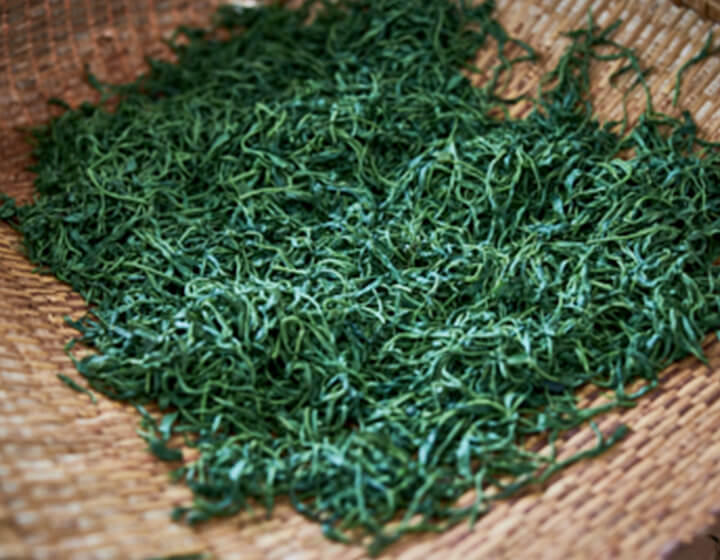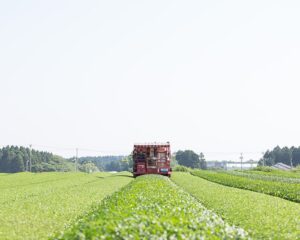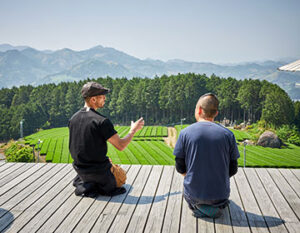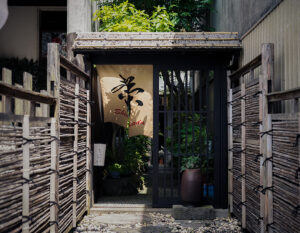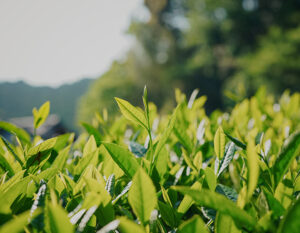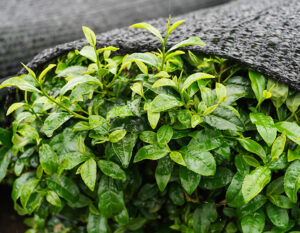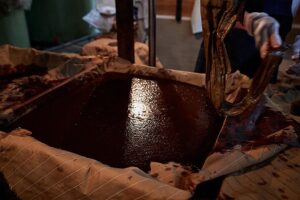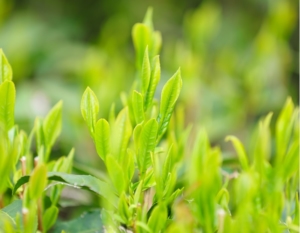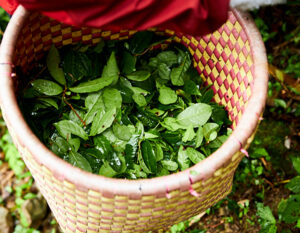Hirumaen Tea Studio is run by the owner of Hirumaen, who is also known as “Kyokuchajin.
Hirumaen is a relatively new tea farm in Iruma City, Saitama Prefecture, known as a production center of Sayama tea, and has been in business for more than 40 years.
The company produces a variety of teas, including hand-ripened teas, and as the name implies, it is committed to the highest quality from cultivation to tea production and sales.
Hand-momi-cha,” where each tea leaf is individually handled
If you know what kind of tea it is, you must be a connoisseur. Unlike ordinary Japanese tea leaves, which are dried by machine, te-momicha is literally dried by hand. The hand-moiled tea leaves are carefully rolled into a needle-like shape by a skilled tea master who spends a long time to finish the tea. The highest quality tea can cost over one million yen per kilogram. This tradition of hand-rolled tea has been handed down from generation to generation in Iruma City, Saitama Prefecture, known for its Sayama tea. The Hiruma-en Tea Studio is located on the Kaneko Plateau, a vast expanse of tea plantations as far as the eye can see.
In many other tea production areas, tea farmers, processors, and distributors are separated, but in the case of Sayama tea, many people do everything themselves,” said Hiruma. I think that is why the traditional hand-momi-cha technique has been passed down through the generations,” says Hiruma. By doing it consistently, Hiruma is able to sense the subtle changes in the tea leaves, which makes it possible to produce delicious tea.
There is an order to the rubbing process. There is an order to the rubbing process: rotary rubbing, rubbing through, DENGURI rubbing, and KOKURI rubbing. We change the rubbing method by feeling the temperature and humidity of the leaves with our hands.
The surface temperature of the roasting furnace is 40 to 50 degrees Celsius, and the steamed tea leaves “dance” in Hiruma’s hands as steam rises from the furnace. The steamed tea leaves “dance” in Hiruma’s hands while the steam rises. Nakata tried his hand at it, but it was extremely difficult to apply heat evenly to the entire tea leaves, which can be as large as one’s arm. He is able to produce a flavor that cannot be produced by a machine by interacting with each tea leaf one by one.
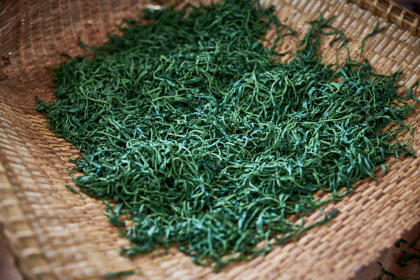
A tea master who has won the Minister of Agriculture, Forestry and Fisheries Award seven times
Mr. Hiruma is also the chairman of the National Association for the Promotion of Handmade Tea, and has received the Minister of Agriculture, Forestry, and Fisheries Award, the highest honor for tea masters, seven times. His pursuit of tea is so great that he has developed a new brewing method called “Yae-no-Kanade,” which is used to brew extremely well-polished tea. Mr. Hiruma, who is extraordinarily particular about tea, taught Nakada how to make teemomi tea. Only the best first-grade gyokuro tea leaves, which are hand-picked and covered two weeks before harvest, are made into teemaki tea. The tea leaves are then carefully hand-picked on a roasting furnace (hoiro), which is a special stand designed to heat the tea leaves from below and dry them while they are being hand-picked.
He says, “I rub them carefully, feeling not only the texture of the hand, but also the color, smell, and weight of the tea. If you don’t have this sense, you won’t be able to make a good hand-milled tea.
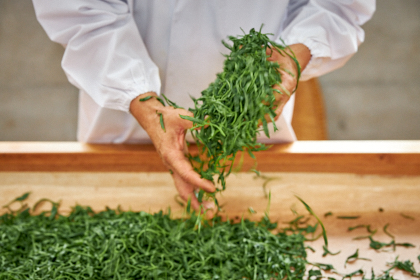
How to drink delicious hand-rubbed tea
Skilled artisans spend a lot of time and effort to make hand-momi-cha. The way to drink it is to pour a few drops of hot water over two or three te-momi teas and taste the “drops”. When you put it in your mouth, the flavor and aroma fills your mouth with a feeling of indescribable happiness that is hard to believe that it is just a few drops. It is also interesting to note that when the tea leaves open up beautifully, the tea leaves themselves are reproduced in their original form before drying. Once you drink it, you will understand why this tea is so expensive. It is quite a high-end product, but it is sold in small quantities to make it easier to find, so I recommend buying it as soon as you see it. With the advancement of mechanization, it is now easy to obtain delicious tea, but it is also good to take the time to taste something that takes a lot of time and effort to make.
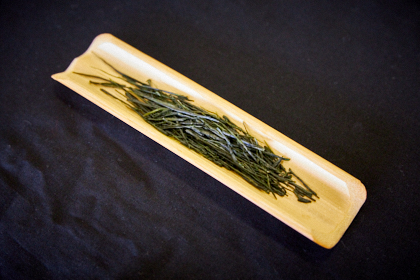
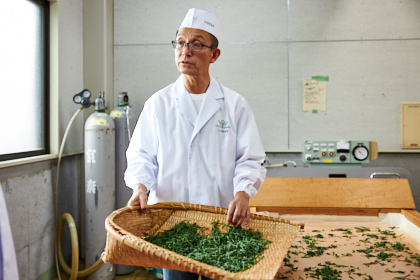
We have been researching and developing tea techniques, seeking novelty while respecting tradition. We hope you will enjoy our high-quality teas, which are carefully hand-picked and hand-firred over time, and our new-fangled teas with gorgeous aromas like flowers and fruits.



